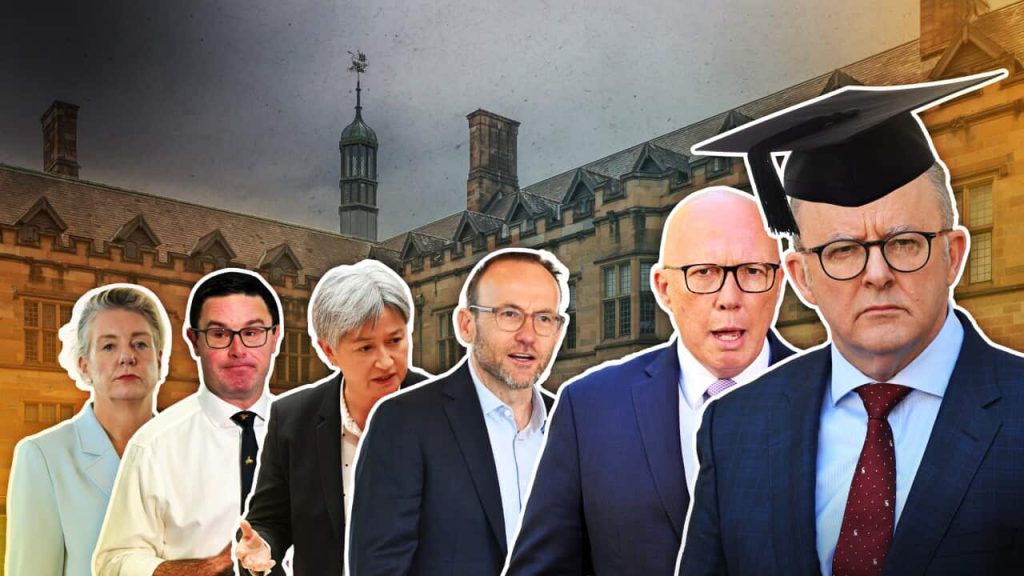Introduction
Unlike the fee-free tuition enjoyed by some of our most senior politicians, nearly three million Australians have HECS-HELP loans that have burdened them with debt for years.
Policy Reform
Earlier this month, the Labor Party announced significant reforms to the Higher Education Contribution Scheme (HECS), pledging to wipe off 20% of all student loan debts by 2025 if re-elected.
This election promise would alleviate $5,520 from the average HECS debt of $27,600, benefiting many struggling borrowers.
Labor also aims to increase the income threshold before students must start repaying their HECS debts, with the country’s total HELP debt reaching a staggering $81 billion by the end of 2023-24.
Government Response
As politicians gear up for the final sitting week of the year, the government is pushing to expand fee-free TAFE placements to 100,000 individuals annually starting in 2027.
Criticism and Hypocrisy
These proposed measures have faced criticism from the federal Opposition, who argue that reducing university fees is inherently unfair.
Opposition frontbencher Paul Fletcher emphasized the importance of students bearing some of the costs of their education, sparking debates on social media about the hypocrisy of such statements.
Even NDIS minister Bill Shorten advocated for a “HECS break” in a recent opinion piece, shedding light on the disparities in the education system.
Historical Context
Gough Whitlam’s Labor government abolished tuition fees for university and technical college students in 1974, promoting accessibility to tertiary education for all Australians.
The fee-free education policy persisted through Liberal Prime Minister Malcolm Fraser’s tenure but was eventually replaced by the HECS system in 1989 under the Hawke Labor government.
Politicians’ Education Status
Roughly one in four current parliamentarians either partially or fully benefited from the era of free tuition, including Prime Minister Anthony Albanese.
Notably, leaders like Adam Bandt and Peter Dutton paid for their studies during the HECS period, showcasing a diverse educational background among political figures.
Both major parties’ front benches are evenly split, with key members like Richard Marles, Tanya Plibersek, Tony Burke, Angus Taylor, Barnaby Joyce, and Daniel Tehan having received a “free ride” education.
Over half of parliament utilized the HECS scheme or self-funded their education, with notable figures like Jim Chalmers, Jason Clare, and Sussan Ley falling into this category.
An interesting statistic reveals that approximately 16% of parliamentarians lack a higher education qualification, emphasizing the diversity of educational backgrounds in the political sphere.
Conclusion
The debate surrounding Labor’s HECS reforms and politicians’ free university education highlights the complexities of the education system and the disparities that exist within it. As policies evolve and politicians advocate for change, it’s essential to consider the historical context and individual experiences that shape these discussions.
FAQ
Which politicians benefited from free university education?
- One in four current parliamentarians benefited from fee-free tuition.
- Key figures like Prime Minister Anthony Albanese and various frontbenchers received a “free ride” education.
- Approximately 16% of parliamentarians do not hold a higher education qualification.


